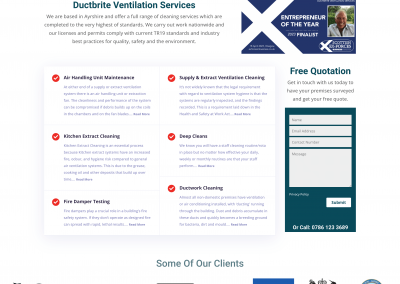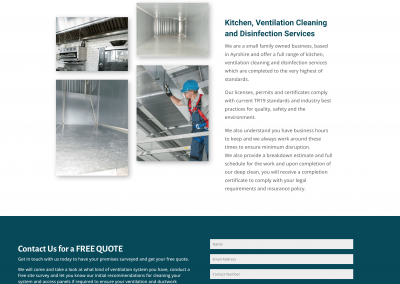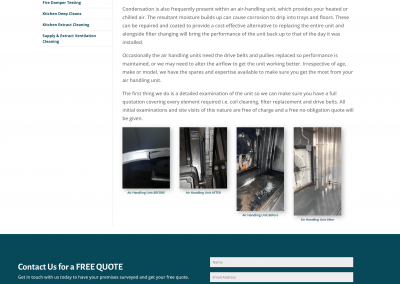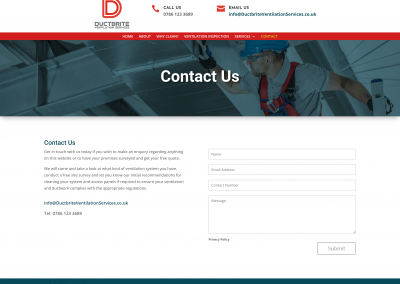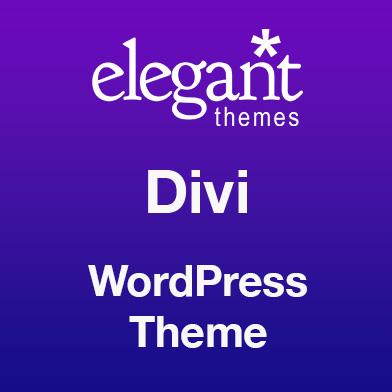Web Content
In today’s digital age, having a well-designed and informative website is crucial for businesses to establish an online presence and attract potential customers. However, many business owners struggle to determine what content should be included on their website to effectively engage their target audience. In this comprehensive guide, we will explore the essential pages and elements that every website should have to maximize its impact and drive success. From the homepage to the contact page, we will cover it all. So, let’s dive in!
The Homepage
The homepage is the first impression your website makes on visitors. It should be visually appealing, informative, and engaging. Start with a captivating hero image or video that represents your brand and immediately grabs attention. Use a clear and concise headline to communicate your unique value proposition. Include a brief description of your business and what sets you apart from competitors. Use compelling visuals, such as high-quality images and videos, to showcase your products or services.
The homepage should also feature a prominent call-to-action (CTA) that directs visitors to take the desired action, such as making a purchase, subscribing to a newsletter, or contacting you. Keep the design clean and uncluttered, making it easy for visitors to navigate and find the information they need. Consider incorporating testimonials or customer reviews to build trust and credibility.
Page Examples
About Us
The About Us page provides an opportunity to tell your brand story and establish a personal connection with your audience. Share the history of your business, your mission and values, and the team behind it all. Use this page to showcase your expertise, credentials, and any awards or recognition you have received.
Craft a compelling narrative that resonates with your target audience and highlights how your business can solve their problems or meet their needs. Include professional photographs and biographies of key team members to add a personal touch. Consider adding a timeline or infographic to visually represent your journey.
Products and Services
The Products and Services page is where you showcase what you offer. Provide detailed information about each product or service, including features, benefits, pricing, and any special offers. Use high-quality images or videos to demonstrate the value of your offerings.
Organize your products or services into categories or sub-pages to make it easy for visitors to navigate and find what they are looking for. Include clear and visible CTAs to encourage visitors to make a purchase or request more information.
FAQs
The Frequently Asked Questions (FAQs) page is an important resource for addressing common queries and concerns of your customers. Anticipate the questions they may have and provide clear and concise answers. Organize the FAQs into categories or sections for easy navigation.
Including an FAQ page on your website can help save time for both your customers and your customer support team. It demonstrates that you value customer satisfaction and are proactive in providing information.
Contact Us
The Contact Us page is essential for providing visitors with a direct way to get in touch with your business. Include your business address, phone number, email address, and social media handles. Consider adding a contact form that allows visitors to send inquiries directly from your website.
Make sure your contact information is easy to find and prominently displayed on every page of your website. This page is also an opportunity to provide additional information, such as your business hours or a map of your location.
Testimonials
Testimonials are powerful social proof that can influence potential customers to trust and choose your business. Create a dedicated Testimonials page where you can showcase positive feedback from satisfied customers. Include their names, photos (with permission), and brief testimonials highlighting the value they received from your products or services.
You can also sprinkle testimonials throughout your website, strategically placing them on relevant pages to reinforce trust and credibility. Consider using different formats, such as text, video, or audio testimonials, to cater to different preferences.
Blog
A blog is a valuable tool for providing informative and engaging content to your audience. Create a Blog page where you can regularly publish articles, guides, tips, and industry insights. This helps establish your expertise, attract organic traffic through search engines, and engage with your audience.
Organize your blog posts into categories or tags to make it easier for visitors to navigate and find relevant content. Encourage readers to leave comments and share your blog posts on social media to increase engagement and reach.
Privacy Policy
The Privacy Policy page is a legal requirement for websites that collect personal information from visitors. Clearly outline how you collect, store, and use personal data, as well as the measures you take to protect it. This page helps build trust and assures visitors that their privacy is a priority.
Ensure that your Privacy Policy is compliant with relevant data protection laws, such as the General Data Protection Regulation (GDPR). Include information on how visitors can exercise their rights regarding their personal data, such as requesting access or deletion.
Terms and Conditions
The Terms and Conditions page outlines the rules, guidelines, and terms of use for visitors accessing and using your website. It covers topics such as intellectual property rights, disclaimers, liability, and user responsibilities. This page helps protect your business legally and sets clear expectations for visitors.
Consult with a legal professional to ensure your Terms and Conditions are comprehensive and enforceable. Update this page regularly to reflect any changes in your business practices or legal requirements.
Site Map
A Site Map page provides an organized overview of the structure and content of your website. It helps visitors navigate your site and find specific pages or information quickly. Include links to all major sections and sub-pages of your website.
Site maps are also beneficial for search engine optimization (SEO) as they make it easier for search engines to crawl and index your website. Submit your site map to search engines to ensure they are aware of all the pages on your site.
Social Media Integration
Integrate your social media profiles and content into your website to enhance engagement and expand your online presence. Include social media icons or buttons that link to your profiles, making it easy for visitors to follow and share your content.
Displaying social media feeds or embedding social media posts on your website can also provide fresh and dynamic content. Encourage visitors to share your website content on their social media platforms to increase visibility and reach.
Mobile Optimization
With the increasing use of smartphones and tablets, it is crucial to optimize your website for mobile devices. Ensure that your website is responsive, meaning it automatically adjusts its layout and design to fit different screen sizes.
Mobile optimization improves the user experience and makes it easier for visitors to navigate and interact with your website on their mobile devices. It also has a positive impact on SEO, as search engines prioritize mobile-friendly websites in their rankings.
Conclusion
Building a successful website requires careful planning and consideration of the content you include. By incorporating the essential pages and elements outlined in this guide, you can create a website that effectively engages your audience, builds trust, and drives business growth. Remember to continuously update and optimize your website to stay relevant and meet the evolving needs of your target market. Good luck!


